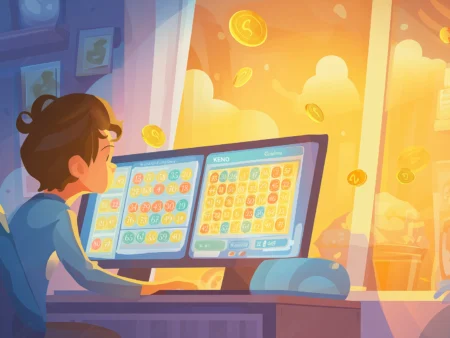You’ve probably heard of it: double your bet after every loss, and eventually, you’ll win it all back, plus a profit. The Martingale strategy is one of the most popular gambling systems around. And on the surface, it makes sense.
That’s exactly why it’s dangerous.
Whether you’re spinning roulette, playing blackjack, or testing any kind of betting progression system, Martingale whispers the same promise: “One win fixes everything.” But in real casino environments, with hard table limits, limited bankrolls, and variance that doesn’t care about your pattern, that promise collapses fast.
So, does the Martingale strategy actually work, or is it just a polished way to go broke slowly? We’ve used it, we’ve tested it, and we’ve watched it fail. More importantly, we’ve learned how smart players actually protect their bankrolls and play for longevity.
Here’s what the math, and experience, really say.
Table of contents
How the Martingale Strategy Works
The Core Concept
At its core, the Martingale strategy is brutally simple: you double your bet after every loss, aiming to recover all previous losses and end up with a profit equal to your original stake.
This classic double down system falls under what’s called a negative betting progression, meaning you increase your stake after a loss, not a win. It’s popular because it feels mathematically sound: eventually, you’re bound to win, and when you do, you get everything back in one shot.
But that surface-level logic skips two harsh realities: limited bankrolls and hard table limits. And both can kill this strategy before it ever recovers.
Here’s a basic example of how a Martingale progression might look starting from a €/$ 10 bet:
Martingale Bet Progression Table
| Bet # | Bet Amount | Outcome | Total Wagered | Net Result |
| 1 | €/$ 10 | Loss | €/$ 10 | -€/$ 10 |
| 2 | €/$ 20 | Loss | €/$ 30 | -€/$ 30 |
| 3 | €/$ 40 | Loss | €/$ 70 | -€/$ 70 |
| 4 | €/$ 80 | Win | €/$ 150 | + €/$ 10 |

So you’ve risked €/$ 150 to win just €/$ 10. And that’s assuming the win lands on your fourth bet, one more loss and you’re staring down a €/$ 160 wager just to break even. This is where Martingale’s “safety” shows its real face: the house always lets you dig deeper until your shovel hits steel.
Key takeaway: The Martingale system looks manageable in short sequences, but its downside scales fast and unforgivingly.
Popular Use Cases
Roulette
This is where most players encounter Martingale for the first time. It’s commonly used on even-money bets:
- Red/Black
- Odd/Even
- 1–18 / 19–36
These bets pay 1:1 and feel predictable. But even on a European roulette wheel, your chance of winning is only 48.6%, and lower on American wheels thanks to the double zero. You’re not flipping a fair coin; the zero always tilts the odds toward the house.
Blackjack
In blackjack, Martingale tends to hook players chasing small, steady wins. A €/$ 10 bet turns into €/$ 20, then €/$ 40, then €/$ 80 if you lose three hands in a row. And that’s not rare, even perfect basic strategy can’t protect you from bad variance.
Plus, blackjack adds complications like:
- Pushes
- Blackjack payouts (3:2)
- Splits and doubles mid-sequence
All of which break the clean logic that Martingale relies on.
Trading (Forex/Crypto)
Yes, Martingale logic has even crept into trading, especially in forex and crypto markets. Traders use it by doubling their position after each loss, hoping the market bounces back. But here’s the problem: leverage, slippage, and emotional fatigue make this an even more dangerous game.
In all of these use cases, casino or markets, the system banks on one thing: variance correcting itself before your wallet (or account) taps out. And that’s not how real-world randomness plays.
Why It Seems to Work (But Usually Doesn’t)
The Psychological Hook
“You can’t lose forever, right?”
That’s the seductive logic behind the Martingale strategy. It’s not just about the math, it’s about the feeling of control. You lose once, then again, but you double your bet, confident the next win will bring it all back. One hit, and you’re even, maybe even up. Clean slate. Small win. Confidence restored.
And when it works, it works fast. That early win convinces you the system is smart, even foolproof.
But that confidence? It’s built on instant gratification, not probability. Martingale wins early because you haven’t hit the danger zone yet. It lulls you in. The deeper the streak, the more stubborn you get, and the more painful the payoff becomes.
It’s like a claw machine: the more you play, the more convinced you are that the next try will land. But the longer you go, the more the odds, and your wallet, turn against you.
That’s the trap: Martingale makes you feel like you’re managing risk. In reality, you’re just postponing the hit, and multiplying the size of it.
Real-World Limitations
The Martingale looks flawless on paper. But it collapses fast in the real world, thanks to three hard limits.
1. Table Limits
Casinos aren’t clueless, maximum bet limits exist for a reason. Let’s say you start with a €/$ 10 base bet. After eight straight losses, your next wager is €/$ 1280, just to win back that same €/$ 10.
That’s a total of €/$ 2550 wagered to clear a single-unit profit. And if your table caps out at €/$ 1000? You’re done. The system breaks, and your bankroll doesn’t get a say.
2. Bankrolls Aren’t Infinite
Even if the table lets you double endlessly, your account balance won’t. Most players simply can’t absorb a deep losing streak, and Martingale doesn’t care. It keeps asking for more until you run out.
When you eventually hit that wall, the only thing you’ve really banked is regret.
3. The House Edge Doesn’t Care
This is the hidden killer. Every bet, whether it’s your first €/$ 10 or your eighth €/$ 1280, carries the same house edge. You’re not increasing your odds, you’re just compounding your exposure to a system that’s mathematically tilted against you.
Bottom line? The Martingale strategy isn’t risk management. It’s loss escalation disguised as logic, and it usually ends with a bruised ego and an empty balance.
Martingale Strategy: Pros and Cons
Pros
Let’s give the Martingale strategy its due, it’s not popular by accident.
- It’s dead simple. No charts. No math wizardry. No counting cards. Just double after a loss, reset after a win, and repeat.
- It feels structured. For new or casual players, Martingale offers a sense of control. You’re not throwing random bets, you’re “following a system.” That perceived order is seductive.
- You can bank small wins, if luck’s on your side. Avoid a cold streak and you’ll usually walk away with a quick, modest profit. In short sessions, it can even feel like you’re gaming the system.
That’s the bait.
Now here’s the switch.
Cons
The Martingale strategy comes with serious, and often catastrophic, downsides:
- High risk of ruin.
The math escalates fast. A 7-loss streak on a €/$ 10 base bet requires a €/$ 1280 wager just to win back your original €/$ 10. That’s a €/$ 2550 outlay for a single-unit profit. One cold streak can wipe out your entire session, or worse. - False sense of control.
Martingale feels strategic, but the odds never change. The roulette wheel, the blackjack shoe, the dice, they don’t care how many times you’ve lost. There’s no memory in randomness. - Encourages emotional play.
One of the fastest ways to torch a bankroll is trying to “win it all back.” Martingale doesn’t just allow that, it’s built on it. That’s not risk management, it’s tilt in disguise. - No edge improvement.
The house edge doesn’t flinch. Whether you’re betting €/$ 10 or €/$ 1280, you’re still at a statistical disadvantage. All you’re doing is increasing exposure, not improving outcomes.
Real Examples: What Happens When You Try It?
The €/$ 10 Martingale Scenario
Let’s say you start small, €/$ 10 on an even-money bet. The table’s quiet. You’ve got €/$ 500 in your account and a simple plan: stop after your first win.
But variance doesn’t care about your plan. Here’s what happens if you hit a 5-loss streak before that win finally lands:
Martingale Progression Example
| Bet # | Bet Amount | Result | Total Wagered | Net Profit/Loss |
| 1 | €/$ 10 | Loss | €/$ 10 | -€/$ 10 |
| 2 | €/$ 20 | Loss | €/$ 30 | -€/$ 30 |
| 3 | €/$ 40 | Loss | €/$ 70 | -€/$ 70 |
| 4 | €/$ 80 | Loss | €/$ 150 | -€/$ 150 |
| 5 | €/$ 160 | Loss | €/$ 310 | -€/$ 310 |
| 6 | €/$ 320 | Win | €/$ 630 | + €/$ 10 |
So you risked €/$ 630 just to win €/$ 10.
One more loss? You’re staring down a €/$ 640 bet, and most tables have caps that would shut you down cold. That’s not strategy. That’s betting on the edge of a cliff.
Yes, sometimes the win comes earlier. But you never know when that cold streak will hit, and Martingale caps your upside while leaving your downside wide open. That’s a trade-off that punishes the patient.
Roulette vs. Blackjack: Which Is “Better” for Martingale?
If you had to run Martingale (we don’t recommend it), where does it theoretically make more sense?
Roulette: Simple, but brutal
Most players try Martingale on even-money bets: red/black, odd/even, or 1–18/19–36. These bets are clean, pay 1:1, and fit the structure of a progression system.
But:
- Roulette has no memory.
- The zero (or double zero) always ruins the math.
- And with no skill involved, you’re completely at the mercy of variance.
It’s just spin, lose, double, repeat, until you can’t anymore.
Blackjack: More Complex, Still Flawed
Martingale looks more appealing in blackjack. You’re making decisions. Payouts are more varied. And for skilled players, card counting adds a layer of edge.
But in reality:
- Blackjack adds complexity, pushes, blackjacks, splits, that mess with the bet progression.
- Online or fast-paced tables increase volatility.
- And unless you’re playing flawless basic strategy, your “edge” becomes a liability.
So, which is better?
Neither.
- Roulette is simpler but brutal.
- Blackjack is nuanced but unstable.
Both are built on games where the house holds the long-term edge, and Martingale does absolutely nothing to change that.
What Do Smart Players Do Instead?
Alternative Strategies Worth Trying
The smartest gamblers aren’t the ones chasing losses, they’re the ones playing the long game. If you’ve been burned by Martingale (or you’re sharp enough to avoid it), here’s what actually works.
Flat Betting + Edge Hunting
Flat betting, wagering the same amount every round, might not sound sexy, but paired with smart game selection, it’s a low-variance, high-discipline approach that keeps you in control.
What to look for:
- High RTP slots (browse our Best RTP Slots list)
- Blackjack tables with favorable rules (e.g., 3:2 payout, dealer stands on soft 17)
- Promos or free spins with +EV potential (e.g., low-wagering bonuses, no-KYC offers)
Instead of doubling to “recover,” you’re building volume over time and letting math and value, not emotion, guide your play.
Positive Progression Systems (e.g., Paroli)
Unlike Martingale, positive progression systems increase your bet after wins, not losses. That means:
- You keep losses contained during cold streaks
- You press your edge when you’re hot
- You’re not chasing, you’re capitalizing
Systems like Paroli aren’t magic bullets, but they flip the risk/reward profile in your favor. And in gambling, that flip is everything.
Segmented Bankrolls + Stop-Loss Limits
Pro players think in sessions, not streaks. That means setting:
- Stop-loss limits (e.g., walk after losing 30% of your session roll)
- Win goals (e.g., cash out after doubling your stack)
- Segmented “wallets” for different games or risk levels
This isn’t just money management, it’s mental game mastery. And it protects your stack from tilt, desperation, and “just one more” syndrome.
Why Bankroll Management Beats Martingale Every Time
Let’s be honest, bankroll management isn’t flashy. But it’s the difference between playing for an hour… or playing all year.
Here’s what it does better than Martingale:
- Sustainability > desperation
You’re not banking everything on one win. You’re planning for dozens, maybe hundreds, with a structure that absorbs swings. - Prevents tilt
Systems grounded in discipline keep you from chasing. And if you’ve ever gone off the rails, you know how valuable that is. - Lets the math breathe
Martingale suffocates your odds. Bankroll discipline gives variance time to even out, and gives you time to recover, adapt, and thrive.
Want smarter ways to play? Read our full Bankroll Management guide, and learn how the pros survive the swings, the tilt, and the grind.
FAQs About the Martingale Strategy
Only in the short term, and only if you avoid a long losing streak. It can deliver small, fast wins during brief sessions, but over time, the exponential risk and house edge almost always catch up. It’s not a sustainable system.
No, but they don’t need to. Most tables have max bet limits specifically to break the Martingale strategy. Once you hit that cap, you can’t double anymore, and the system fails.
Not realistically. While it’s technically possible to win in short runs, the system is built on the false promise of infinite bankroll and no table limits, two things real gamblers don’t have. In practice, it’s a fast track to ruin.
Some players cap their bet progression at 3–4 levels or lower the starting bet to reduce risk. But once you soften the system, you also reduce the payoff, and the risk of hitting the loss wall still looms. There is no “safe” Martingale.
Absolutely. Systems like flat betting, positive progression (e.g., Paroli), and smart bankroll management give you actual control without the blowout risk. You’re playing with structure, not chasing a win that might never come.












































